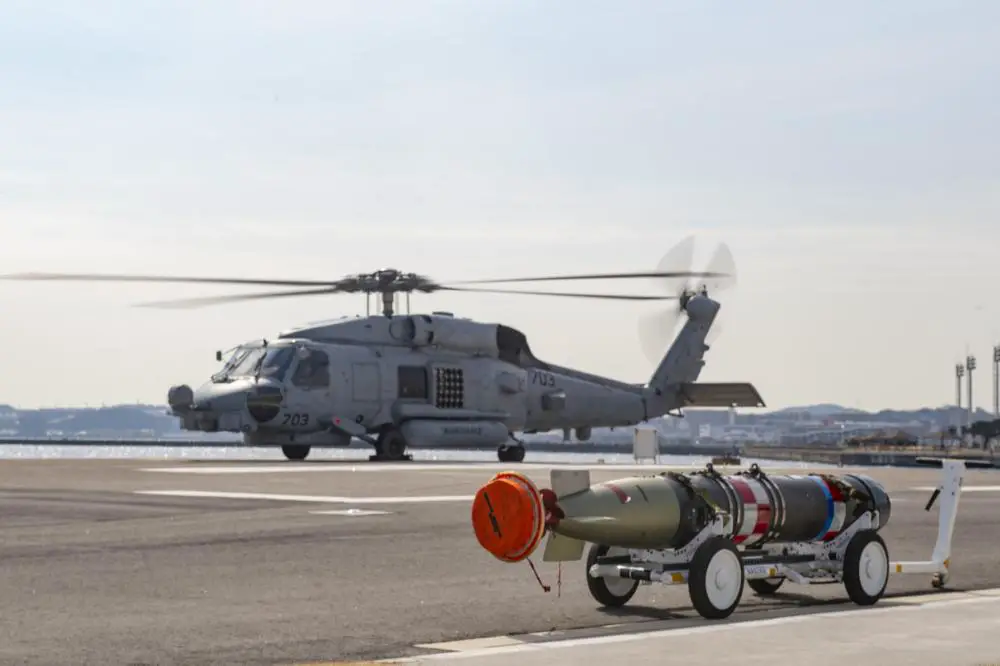The U.S. State Department has approved a potential Foreign Military Sale (FMS) to the Government of India, involving the acquisition of MK 54 MOD 0 Lightweight Torpedoes and related support equipment. The MK 54 lightweight torpedo, originally known as the Lightweight Hybrid Torpedo (LHT), is a 12.75-inch (324 mm) anti-submarine weapon, utilized by the U.S. Navy and allied nations for ASW operations. The estimated total cost of the deal is $175 million, and the Defense Security Cooperation Agency (DSCA) has officially notified Congress of this possible sale. India’s request includes fifty-three (53) MK 54 MOD 0 Lightweight Torpedo all-up rounds. In addition to these, the package encompasses non-MDE (Major Defense Equipment) items such as Recoverable Exercise Torpedoes (REXTORP), air launch accessories, classified and unclassified spare parts, torpedo containers, and support equipment, including testing tools. The sale also includes technical support, training, contract management, and initial follow-on-technical support (FOTS), along with infrastructure and exercise firing assistance, and other logistical elements.
This proposed sale aligns with the foreign policy and national security objectives of the United States, aiming to strengthen the strategic partnership between the U.S. and India. It also aims to enhance India’s role as a significant force for political stability, peace, and economic growth in the Indo-Pacific and South Asia regions. As a Major Defense Partner, India plays a critical role in the U.S.’s regional security framework, making such transactions crucial to mutual interests. The acquisition of the MK 54 torpedoes is expected to significantly boost India’s capacity to address current and emerging security challenges. By increasing its stockpile of anti-submarine weapons, India is better equipped to support its MH-60R “Romeo” helicopters in anti-submarine warfare (ASW) missions. India already operates MK 54 MOD 0 Lightweight Torpedoes, making integration into its current defense systems seamless. The combined package aims to bolster India’s anti-submarine warfare capabilities.

The MK 54 lightweight torpedo was developed through a collaboration between Raytheon Integrated Defense Systems and the U.S. Navy, addressing the limitations of previous models like the MK 50 and MK 46. The MK 50 torpedo was designed to counter high-speed nuclear submarines such as the Soviet Alfa-class, but its high cost made it impractical against conventional submarines. Meanwhile, the older MK 46, built for open-ocean use, faced challenges in littoral environments. The MK 54 combines the advanced homing system of the MK 50 with the warhead and propulsion sections of the MK 46, allowing for better performance in shallow waters. Enhanced with commercial off-the-shelf (COTS) technology, the MK 54 offers improved cost-efficiency while maintaining robust ASW capabilities. The MK 54 can be deployed from a range of platforms, including surface vessels through Mark 32 torpedo tubes and vertical launch ASROC systems, as well as ASW aircraft. The P-8 Poseidon aircraft utilizes the High-Altitude Anti-Submarine Warfare Weapons Capability (HAAWC) to launch these torpedoes from high altitudes with precision.
India’s MH-60R helicopters, which will benefit from the newly acquired MK 54 torpedoes, form a crucial part of the Indian Navy’s ASW fleet. These helicopters have been integrated with the aircraft carrier INS Vikrant, enhancing the Navy’s ability to conduct rescue operations, including night missions, thanks to advanced night vision and forward-looking infrared (FLIR) capabilities. Out of the 24 MH-60R Seahawks ordered in 2020, six were delivered by December 2023, with the remaining units expected by 2025. These helicopters are operated by INAS-334 and based at INS Garuda, Kochi. This sale builds upon India’s previous procurement of 32 MK 54 torpedoes through a similar FMS arrangement in 2011, intended for the P-8I Long-Range Maritime Patrol (LRMP) aircraft. The new deal for 53 torpedoes further solidifies India’s strategic ASW capabilities, reinforcing its deterrence posture in the region. With no offset agreements tied to the sale, a significant portion of the lightweight torpedo hardware will be sourced directly from U.S. Navy stocks.















